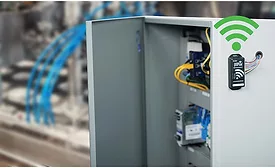Home » Keywords: » Industrial Internet of Things (IIoT)
Items Tagged with 'Industrial Internet of Things (IIoT)'
ARTICLES
Temperature Monitoring and Control
Making the argument for wireless temperature solutions
Not every temperature measurement application needs to be wireless, but for some locations, IIoT wireless connections may be the only practical choice
July 22, 2020
Tech Update
Employing wireless sensors without a clear goal could prove inefficient
January 22, 2020
IIOT Communications
IIOT sensor communications issues still need work
NIST’s Nenad Ivezic provides a more detailed view of the progress made in standardizing data communications in the food supply chain—including sensors and IIoT at the farm and industrial levels
January 17, 2020
Tech Update
PLCs and controllers are being used as intelligent gateways to IIoT
October 16, 2019
Elevate your expertise in food engineering with unparalleled insights and connections.
Get the latest industry updates tailored your way.
JOIN TODAY!Copyright ©2025. All Rights Reserved BNP Media.
Design, CMS, Hosting & Web Development :: ePublishing









